Blogs are all about you — what you want to write about, create, and share with the world. That's probably the best part about them:the opportunities are endless.
You've probably come to this post because you know you want to start a blog, but have no idea what you want to write about, or how your blog can stand out against the millions of others published on the internet.
For that, I refer you to the first paragraph of this post, as well as the ones to come.
From music to marketing, the type of blog you create should be one catered to your interests. Without that motivation, it's unlikely that you will continue to update it.
Here, we've cultivated a list of some of the more popular topics for blogs, as well as a section on blogs that typically make more money, to help you find inspiration to get started with your own blog.
1. Food
As a self-proclaimed foodie, food blogs are my favorite types of blog. They usually follow a similar content format of categorically-organized recipes. Some have videos to pair with those recipes, as well as social media channels that all connect to the blog in some way.
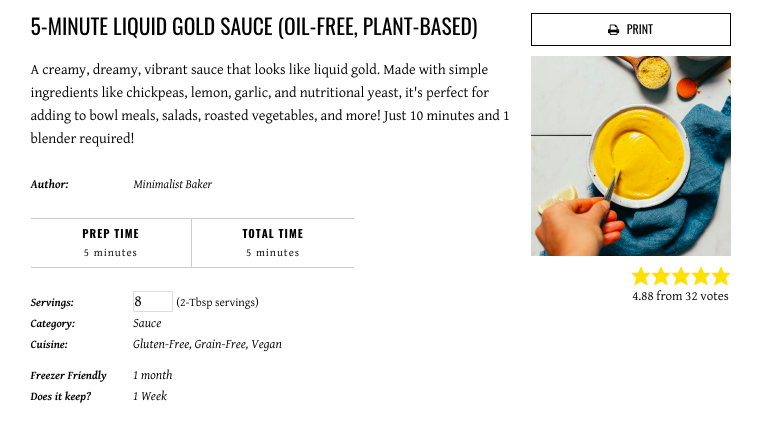
Above is an example of one of my favorite food blogs, Minimalist Baker. Note how the title of the post contains information that might pull a foodie in — "5 minutes," and "plant-based". This recipe will appeal to anyone who searches for easy, no-fuss cooking.
2. Sports
Sports blogs exist for every type of sport imaginable — even squash. If you have a passion for ESPN and love writing, this may be the perfect intersection for you. From covering games to giving player insights, sports blogs are an important source for fans to catch up on what they missed.
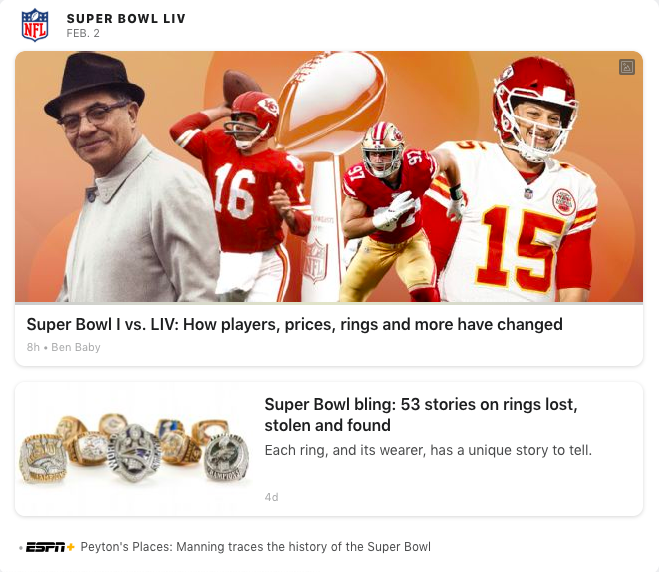
Like this screengrab from ESPN, sports blogs also report on news going on in the industry — these two stories are about the Super Bowl. So if you're thinking about doing a sports blog, you have options. You can either focus on a specific sport, or take a more holistic approach, like ESPN.
3. Travel
If you love to go on trips and capture the moments, a travel blog might be right up your alley. There's something about travel blogs that are so relaxing, in my opinion — seeing pictures of gorgeous destinations is always a treat. That's why, if you're thinking of launching a travel blog, you might want to invest in a nice camera.

For instance, look at this vibrant, colorful photo of the Charles River. (I'm probably a little biased, considering I live in Boston and commute over this river daily). To rank highly on the SERPs, you'll want to have high-quality images so travel enthusiasts are compelled to view your posts.
4. Lifestyle
Lifestyle blogs are probably the most versatile of blog types. Aptly named, lifestyle blogs are about a person's life. What they like to do, where they like to eat and shop … think of a lifestyle blog as a website for influencers. Check out this lifestyle blog, Love Taza, as an example:
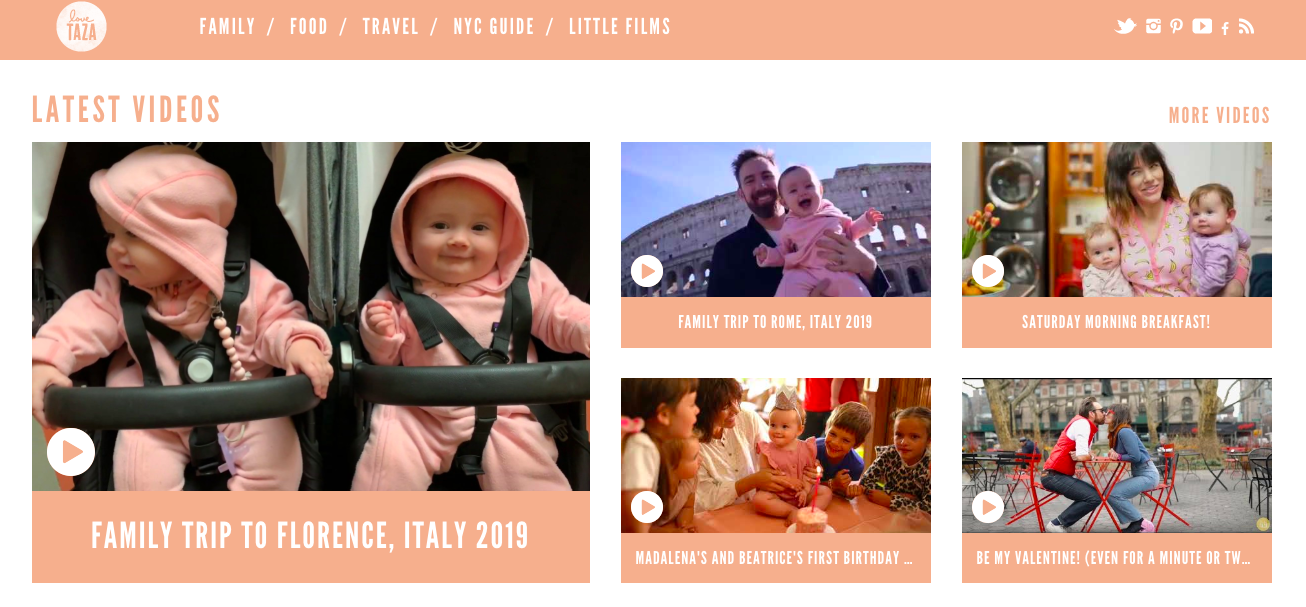
A number of influencers use blogs as a way to market themselves and build a more solid following. Oftentimes, businesses will look for an influencers' blog or website to find out more information on them (as well as contact information) if they're interested in cultivating a partnership. If you're interested in becoming an influencer or simply want to share more of your life with friends and family, this might be the right blog for you.
5. Parenting
This is another guilty pleasure blog type of mine, mostly because parenting blogs have incredible interior decorating going on (another blog type, FYI). Parenting blogs usually give advice and share relatable stories to other parents, or those expecting.
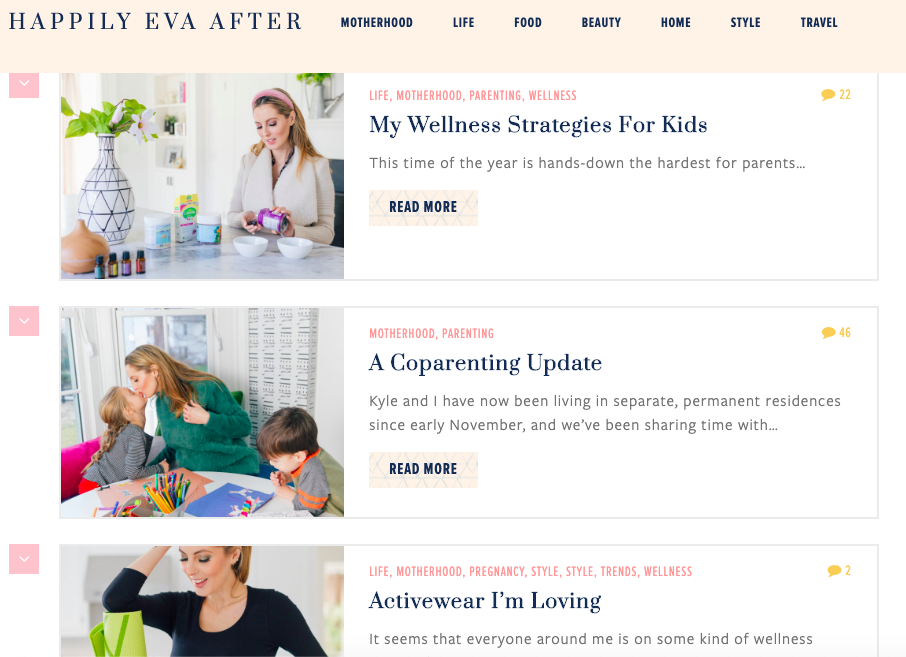
Parenting blogs can be a great resource to new parents, as well as a way to branch out into other outlets. Plenty of parenting blogs have added a YouTube channel to keep content fresh, more engaging, and expand into new target markets For instance, Happily Eva After, the parenting blog shown above, now has a thriving YouTube channel.
6. Gaming
Gaming has turned into an industry that now typically happens online. Between downloadable content (DLCs) and games that depend on an internet connection, it's hard to be a gamer if you're not online. Because of that, gaming blogs are extremely popular.
From game announcements to corporate sponsorships, gaming blogs can go a couple of different ways. They can include game reviews, walkthroughs, cheat codes, or content codes. Since gaming YouTube channels attract a lot of fans, this type of blog can also grow into a YouTube channel all its own. Additionally, it's a good space for gamers to connect with each other, especially if you create opportunities for your readers to engage (like in the comments section of your blog).
7. B2B/Marketing
You've probably guessed — this blog that you're currently reading is an example of the B2B/Marketing category. I want to make it clear that marketing isn't the only industry represented by B2B blogs. Instead, it's more of an example of the type of B2B blogs you can find out there.
If you're in a different industry, you can definitely use that as a cross-section for a B2B blog. For more information about B2B marketing and how a blog would look in that industry, check out our ultimate guide here.
8. Fitness
You may have heard of "Fitstagrams" (Instagram accounts dedicated to fitness journeys) but fitness blogs are also a dime and a dozen. These blogs recommend workout tips, healthy recipes, and sometimes offer full workout plans in a "How-to" format, like this post from Nerd Fitness.
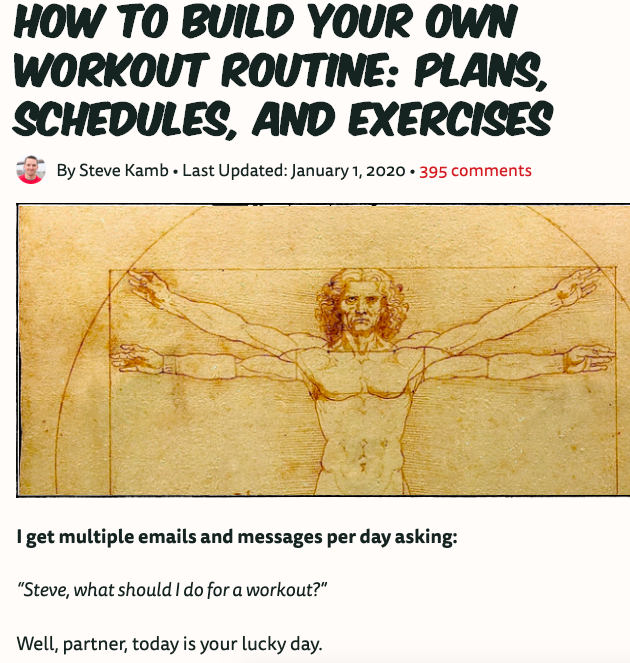
Fitness blogs can be a great companion to those looking to embark on their fitness journey. They're usually geared towards a holistic view on healthy living in general, not just working out. Readers might be interested on perfecting their fitness routine, finding new ways to make healthy eating exciting, or looking for motivation to stick to their fitness lifestyle.
Recall that this is not an expansive list. If you have an idea, see what can come of it. The good thing about blogs is that you can take it wherever you want, and if the content is compelling for a certain readership, money and notoriety comes after.
If you're getting into blogging strictly to make money, however, this post has tips for that, too. Read on to find out more about the types of blogs most likely to become profitable.
Types of Blogs That Make Money
When you're thinking about creating a blog that earns money, there's some different ways you can go about it, whether it be affiliate links, sponsorships, or content offers.
Affiliate links are a partnership, in which a company puts their website links on yours, so when anyone clicks on the link, you earn a percentage and so does that company. Next, in blog sponsorships, generally, companies ask that you write a review of their product for a fee or a portion of the product's sales.
Finally, content offers are a way for you to leverage any content resources you have and monetize them. So content like an ebook or template can be turned into a call-to-action to entice readers to find out more.
1. Health and Fitness (Interviews and Guides)
Fitness blog Love Sweat Fitness, started by Katie Dunlap, is an expansive fitness blog offering content ranging from workouts, planning templates, healthy recipes, and travel tips. Among these categories is a lifestyle one, offering workout playlists and a beauty section.
In this category, readers can find posts like fashion obsessions, back to school looks, makeup tutorials, and more. It also has sponsorships, like the one shown below with Vooray. The two brands collaborated on a gym bag in 2017, releasing it on the LSF blog and website:
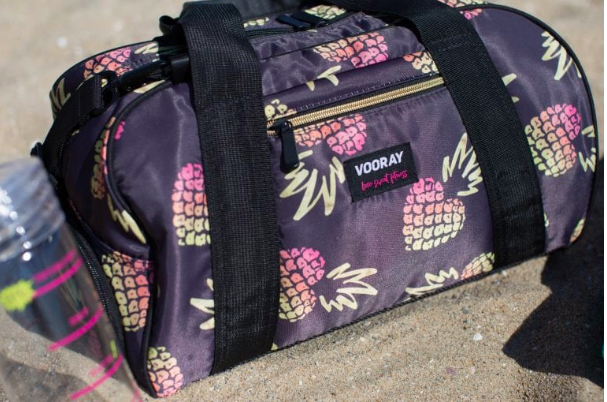
This gym bag and its design were chosen by Dunlap and Vooray. With brand partnerships, companies usually seek out heavy hitters in their industry (like Vooray did with LSF) and offer the brand the ability to design a product exclusively for base pay and a percentage of the profits. And, while this happens a lot in the beauty industry, it's definitely not an industry-specific idea.
2. Social media (Thought Leadership)
LinkedIn's blog is one of the ways a bigger company can monetize their content: by making sure their blogs are written in a high-quality way that appeals to and helps their audience. From a quick look at the blog's homepage, it's easy to see that LinkedIn's target reader is one on the job hunt.
With that in mind, the company can leverage its resources to produce high-quality content that will make an impact on its readers. This approach works for LinkedIn because they've built a solid reputation as the place people should go for hiring and networking.
A LinkedIn member that's found success on the site would see the blog and think, because LinkedIn has worked for them, that the blog will be helpful, as well.
3. Consumer Technology (Reviews, Affiliates)
Affiliate links work a lot like sponsorships. Generally, if a reader clicks on an affiliate link on a blog, the affiliate earns a profit, and the website itself gets a percentage, as well. On the gaming website PC Gamer, for instance, one of their affiliates is Amazon.
This is a post about the best personal computers to buy for gaming, updated for 2020. The post brings readers suggestions about which computers are best for PC gaming, and nearly every product has an Amazon link.
Why those links are important is because the website has an affiliate link with Amazon. Every time a user clicks on the Amazon link, the website earns a profit, as well as Amazon, which is one way the website can fund its expansive listicles.
4. Ecommerce (Lead Generation)
Another way blogs can make money is by partnering with influencers, similarly to partnering with another company. Influencers use their industry and following to bring traction to your site, which is monetizeable.
Lauren Conrad's blog is a lifestyle and fashion blog, and primarily reports on trends and product launches:
This piece highlights another fashion influencer, Jessi Burrone, the model for the photos in this post. LC and Burrone partner together on numerous shoots for the website.
If seen sporting a brand's fashion, like Burrone is (she's wearing LC clothes in the photos), some followers might see that and say to themselves, "Well, now I need this sweater if Jessi has it."
5. B2B (Content offers)
If your blog is a side project of a bigger product, spotlight that content in different ways. If your blog is one of your largest sources of traffic, it makes sense to use it as a lead nurture tool.. For instance, take a look at Buffer's blog post about Instagram Stories, below:
At the top of the post, there is an embed for Buffer's podcast about social media trends and topics, which ties in directly to the theme of the post. The idea here is most likely that readers who enjoy the post will also enjoy the podcast, bringing that content more recognition and notoriety. Blogs are a powerful content resource, especially for product promotion.
If you don't have the budget for ads, blogs can be sort of a "built-in ad" for you, and depending on how you host your website, you can track the results of your blog in real time. HubSpot's CMS provides a full-service blogging feature that can help you get up and running, as well as check progress.
Whether your blog is a bedroom project to get your feelings out or the core function of your day job, the opportunities know no bounds as to the type of blog you can have.
Because technology is so embedded into our world, nearly every industry can benefit from a digital presence, so picking the type is completely up to you. The hardest part is beginning to write.
from Marketing https://ift.tt/2t93NDK
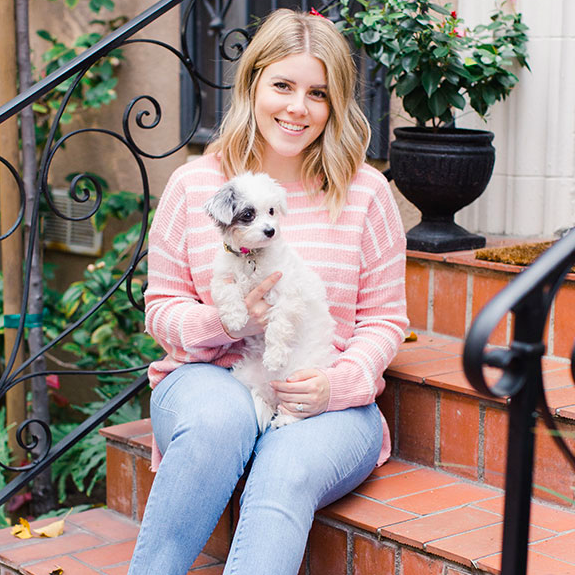
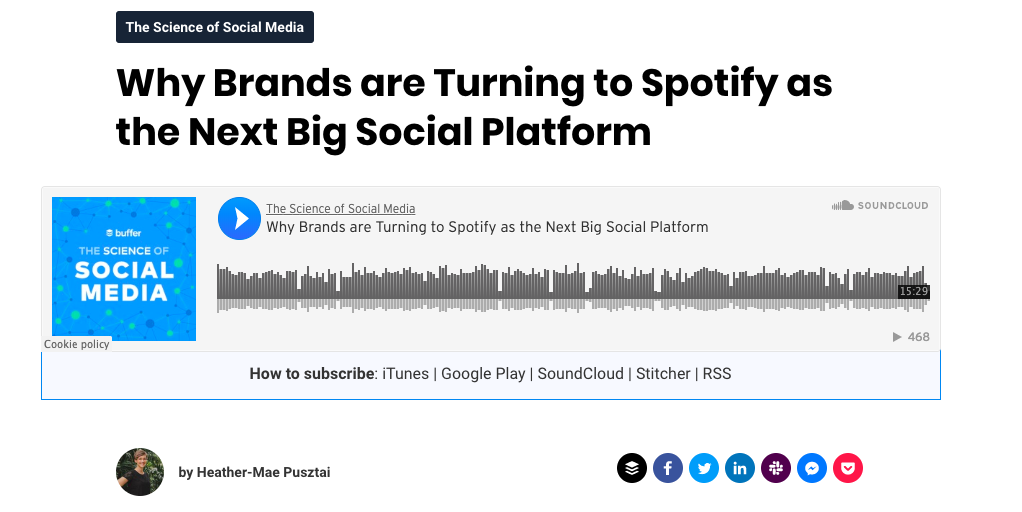

No comments:
Post a Comment